Vedic Science
Different Vedic Vimanas (aircrafts) Mentioned in Ramayana
Published
5 years agoon
By
Vedic Tribe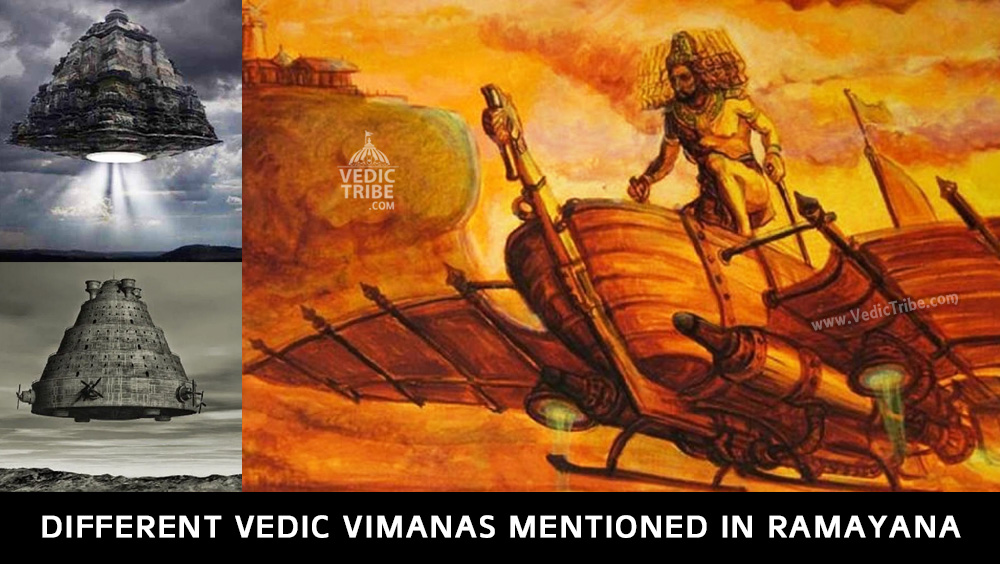
Sage Valmiki has mentioned the word ‘Vimana‘ atleast 19 times in Ramayana.
Sita mentioned 3 different types of Vimanas in Ramayana (Ayodhya Kanda, 27 Sarga), where she wishes to follow her husband to forest exile.
Ravana used jumbo jet, helicopter etc, while Indrajit used Fighter-Jet and Vanaras used silent air-gliders.
Some modern writers claim that Valmiki. who wrote about Vimanas in Ramayana has only imagined flying machines in his era.
If that was just imagination, then why only Valmiki imagined them and why not other writers in these thousands of years ever wrote about them ?
Did they lack imagination ?
Vimanas are mentioned even in Mahabharata and many other ancient Indian scriptures like Puranas.
Vimanas in Ramayana
प्रासाद अग्रैः विमानैः वा वैहायस गतेन वा |
सर्व अवस्था गता भर्तुः पादच् चाया विशिष्यते || २-२७-८
Translation : Protection under the feet of the husband is better than being on top of a lofty building or in aerial cars or in moving through the sky or in attaining all types of positions. (Ayodhya Kanda, 27 Sarga)
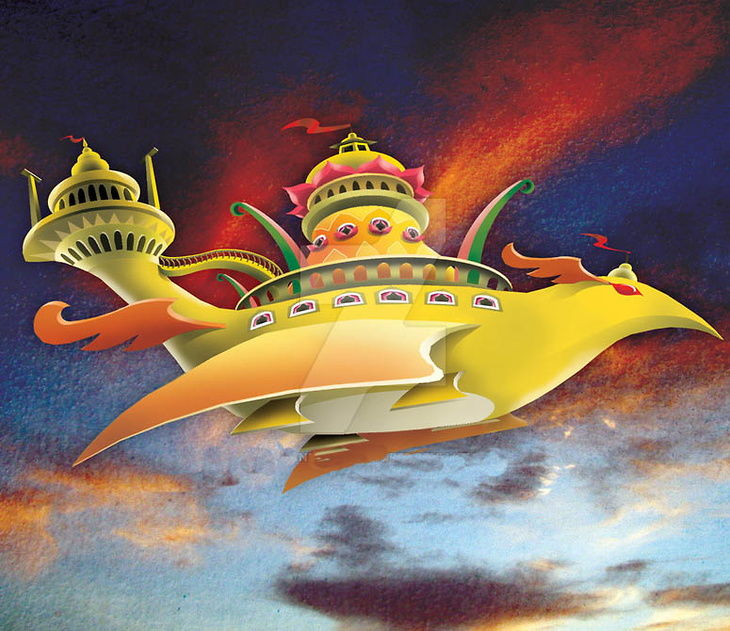
When Sumatra enters Rama’s palace, he notices houses(rooms) similar to flying divine cars. (Ayodhya Kanda, 15 sarga)
ततोऽद्रिकूटाचलमेघसन्नि भं |
महाविमानोपमवेश्मसंयुतम् |
अवार्यमाणः प्रविवेश सारथिः |
प्रभूतरत्नं मकरो यथार्णवम् || २-१५-४९
Translation : Then, that Sumantra entered Rama’s palace, which was like top of a mountain, like an unmoving cloud, which contained houses equal to excellent divine cars, like crocodile entering the ocean containing a number of precious stones. Nobody obstructed him.
When Bharata meets Rama after his exile, he sees the bed of Dharbha grass and wonders how a Prince like Rama and his wife Sita slept on grass blades, while they were supposed to sleep in palaces similar to flying chariots of Gods.
प्रासाद अग्र विमानेषु वलभीषु च सर्वदा |
हैम राजत भौमेषु वर आस्त्ररण शालिषु || २-८८-५
Translation : Having ever dwelt in palaces, the upper apartments resembling the chariots of the gods and in turrets, furnished with excellent carpets decked with heaps of flowers, perfumed with sandal and aloes, like unto a bright and towering cloud, re-echoing to the cries of parrots, suprassing the finest of palaces, which wre cool and fragrant with perfules…
Hanuman, upon entering Ravana’s palance in Lanka for the first time, sees Pushpak Vimana (Sundara Kanda, 7 Sarga) and also feels Ravana’s palace is as big as a flying plane.
नारी प्रवेकैर् इव दीप्यमानम् |
तडिद्भिर् अम्भोदवद् अर्च्यमानम् |
हंस प्रवेकैर् इव वाह्यमानम् |
श्रिया युतम् खे सुक्ऱ्ताम् विमानम् || ५-७-७
Translation : Being shone by the best among women like a cloud by lightening, being worshipped, like being carried by the best swans, like an aerial car full of splendor, of good people in sky.
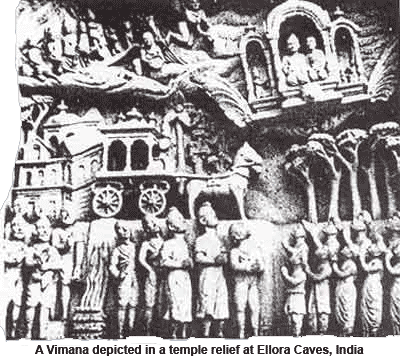
पुष्प आह्वयम् नाम विराजमानम् |
रत्न प्रभाभिः च विवर्धमानम् |
वेश्म उत्तमानाम् अपि च उच्च मानम् |
महा कपिः तत्र महा विमानम् || ५-७-११
Translation : There the great Hanuma saw a great aerial car, the best among best of aerial cars, shining with the name of Pushpaka with the rays of precious stones, and capable of traveling long distances.
Entire description of Pushpak Vimana was given through Hanuman in Sundara Kanda, 8th Sarga.
वहन्ति यम् कुण्डशोभितानना |
महाशना व्योमचरा निशाचराः |
विवृत्तविध्वस्तविशाललोचना |
महाजवा भूतगणाः सहस्रशः || ५-८-६
Translation : Hanuma saw that aerial plane which rakshasas who were great eaters, with a face beautified by earnings, who roamed around in the sky(space) and thousands of genii with round eyes, crooked eyes and wide eyes capable of great speed carrying it.
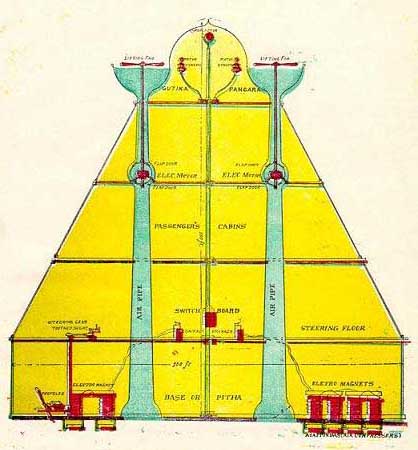
Vyomachara (Vyoma = sky/space + chara = travellers).
Here, Valmiki’s description matches with modern day pilots wearing round goggles around their eyes.
Valmiki also mentions Vimanas in Kandas of Ayodhya 27-8; 15-49, 17-18, 88-5; Aranya 32-15, 35-19, 42-9, 48-6, 50-11; Kiskindha 50-30, 51-5, Sundara 7-7, 8-1, 8-2, 5, 8; 9-19, 11; 11-34, 12-14, 25.
At many other instances Valmiki has described separately the flying by Yogic Siddhi, at Ayodhya 27-8, Vimana taking away the dead to the Heaven at Ayodhya 64-5017, and the Vimana of Gods at Aranya 24-2418 Thus Valmiki has differentiated the real and imaginary aeroplanes Yuddh. 123-22.
He also mentions different layers of atmosphere in which different sizes Vimanas could fly.
Sampati talks to Angada and describes them. (Kishkinda Kanda, 58th Sarga)
जानामि वारुणान् लोकान् विष्णोः त्रैविक्रमान् अपि |
देव असुर विमर्दाम् च हि अमृतस्य च मंथनम् || ४-५८-१३
Translation : I have seen the netherworlds of Rain-god viz., earth and its substrata like atala. vitala, sutala, paataala terrains… and I have even seen those empyrean worlds that were triply trodden by Vishnu, and the intermediary regions of upper and lower worlds where gods and demons combated ghastlily, and because I am that aged I have also seen the unseeable Milky Ocean when it was churned for ambrosia.

Pushpaka Vimana is described similar to a huge Jumbo Jet in Sundara Kanda and Yuddha Kanda.
Vibhishana says that after lunch Rama can reach Ayodhya before sunset if he travels in Pushpaka Vimana.
He says with Pushpaka Vimana, about 2200 KM can be travelled in less than 5 hours.
Which means it can travel at 440 KMPH !!
It Carried Rama, Sita, Lakshmana along with entire Vanara army. So it must be of great dimension.
There were other varieties like fighter jet (used by Indrajit in war to travel at supersonic speeds and emits smoke), Helicopter (used by Ravana to abduct Sita from middle of forest, which landed and took-off without any landing-strip).

While Ravana’s army flew in bunches on Vimanas, Vanaras flew individually in their flying machines.
This description of Vanaras flying suggests that they might have gliders floating on the air currents which were noiseless.
All the Vanaras were not able to fly, only a few could fly and they formed a platoon or a flying squad.
Rama ordered this flying squad to fly forward and search for Daityas (Ravana’s men) hidden in pits or forests or castles.
When they okayed the route, the rest of Vanara army was to march ahead.
This arrangement is just like the modern war tactics. The capacity of their flights was measured in Yojanas.
Jambavanta says, he can fly 80 yojanas as he became old.
Angada says he can fly 100 Yojanas i.e. minimum 400 miles, at a stretch but was not sure of returning.
Hanuman had a much greater capacity, almost limitless.
You may like

Vastu Shastra (or short just Vastu) is the Indian science of space and architecture and how we may create spaces and environment that supports physical & spiritual health and prosperity.
Vastu Shastra evolved during Vedic times in India. The concept of Vastu Shastra was transferred to Tibet, South East Asia and finally to China and Japan where it provided the base for the development of what is now known as Feng Shui.
Vastu Shastra is the art and science of designing houses, offices, temples etc that swirl with good energy. Indian Maharajas and Moghul Emperors used Vastu Shastra when they built their symmetrical palaces, artificial lakes, and geometric courtyards that thirstily absorbed positive energy.
Like feng shui, Vastu Shastra is based on an octagon with the four directions being the anchors. Hindus believe that gods live in each of the quarters of the house, and govern the rooms, possessions, and activities in these locations.
Vasthu is an inherent energy concept of science. We cannot see energy with our naked eyes but we can realize and see its application in different forms and fashions. Vastu Shastra uses the forces of natural energies and aims to restore the balance between the home (the microcosm) and the cosmos (the macrocosm).
Vastu Shastra is not only a science, but is a bridge between man and nature, thus teaching us the Art of Living. Just like every subject of human aspect is governed with rules, regulations and acts, similarly the nature has also got certain key factor principles for smooth governing of its residents, in which Vastu Shastra stands for the law of natural energies.
Vastu, which literally means to live, works on the premise that the earth is a living organism, out of which other living organisms emerge. This life energy is known as Vaastu Purusha. The Vastu Shastra works for a bounded premise i.e., a house, building, industrial area or shop. The main aim is to form a balance between the outside atmosphere and the atmosphere within the premise. Vastu Shastra makes use of five elements – prithvi (earth), agni (fire), tej (light), vayu (wind) and akash (ether), the earth’s magnetic fields i.e. the north and the south pole and the sun’s rays.
History of Vastu Shastra
Vastu Shastra dates back to the times when the sages lived – probably 6,000 and 3,000 BC. The mention of Vastu Shastra can be found in ancient scriptures like the Rigveda, Atharvaveda, Ramayana, Mahabharata, Mayamatam, Manasa saar, etc. Ancient Indian architecture depended on this science for the building of almost all the palaces and temples. Although the exact origins of Feng Shui are debatable, it is thought to have originated about five thousand years ago. Scholars have recorded various aspects of Feng Shui as early as the Song Dynasty (960 BC). However, the basic principles of Feng Shui were first written down during the Han dynasty (25 AD).
How Vastu Shastra works
Vastu Shastra works on three principles of design that cover the entire premise. The first one is Bhogadyam, which says that the designed premise must be useful and lend itself to easy application. The second is Sukha Darsham, in which the designed premise must be aesthetically pleasing. The proportions of the spaces and the material used, in the interiors and exteriors of the building – ornamentation, colour, sizes of the windows, doors and the rooms and the rhythms of projection and depressions – should be beautiful. The third principle is Ramya, where the designed premise should evoke a feeling of well being in the user.
Also, Vastu Shastra is a complicated form of science put together by seventeen sages. There are certain rules that should be followed while building a house or a building. For instance, the building’s underground water tank or well should be situated in the northeast direction. But, if the building has an overhead tank then it should be placed in the southwest direction. Also, more space should be left to the north and the east of the building compound and less on the south and the west. Open space should be kept around the building and if the plot has a road on the east-north directions, it is better for the inhabitants.
Some short principles of Vastu Shastra
-
Indra, the god of gods, is positioned to the East. The East is where it all begins in Vastu Shastra. When people build their homes, the main door or the entrance is always facing the East. The eastern direction is the harbinger of good luck, which comes into the house through the door.
-
Kubera, the god of wealth, resides in the north. In this location some symbolic valuables should be placed to attract wealth.
-
The Northeast is the position for Dharma, the god of righteousness. In Vastu Shastra, this is the place for worship, meditation and introspection.
-
Agni, the god of fire, lives in the southeast corner. This should be the place of the kitchen.
-
Yama, the god of death, resides in the South. He prevents the evil eye from taking control of our lives. In India, people put a ghoulish pumpkin mask, similar to Halloween masks, in Yama’s position to ward off the evil eye.
-
Niruthi, who prevents homes from being robbed, dwells in the southwest corner.
Vedic Science
Description of Solar Eclipse in the Rig Veda
Published
4 years agoon
February 11, 2021By
Vedic Tribe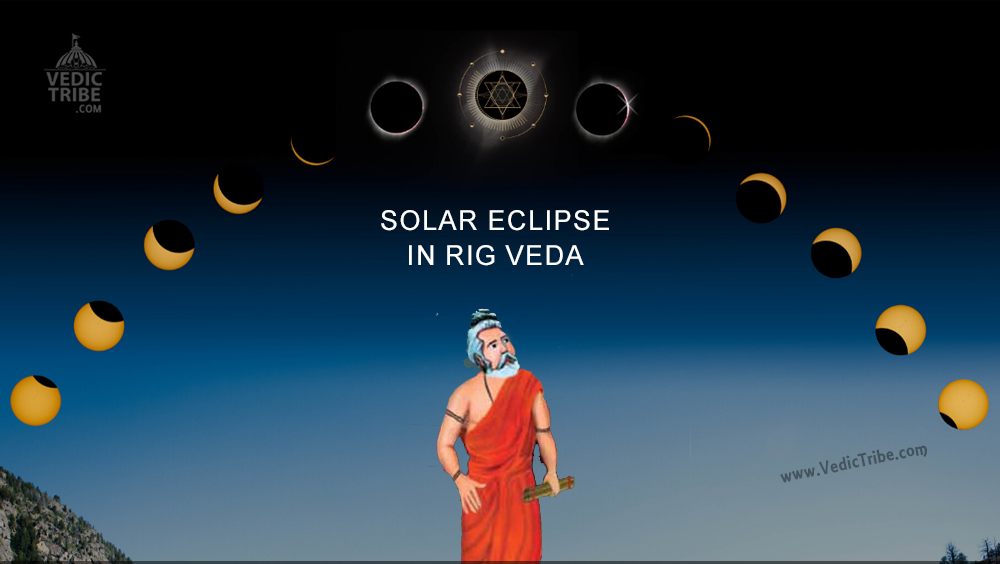
India is rich not only in its culture and traditional values but also in the vast knowledge ancient Vedic scriptures have to offer.
Among the four Vedas, the Rig Veda is the oldest. The others are Yajur, Sama and Atharva. They are a compilation of suktas or hymns from many different Sages over a vast span of historical time which is evident by different astronomical reference presented. Rishi Ved Vyas bundled these various hymns into different groups much after their creation.
It is in Rig Veda that Rishi Atri, the human son of Brahma, speaks of eclipses in metaphors of demons and devas.
In Chapter 5, Hymn 40 the Sage explains:
यत तवा सूर्य सवर्भानुस तमसाविध्यद आसुरः |
yat tvā sūrya svarbhānus tamasāvidhyad āsuraḥ |
O Sūrya, when the Asura’s descendant Svarbhanu, pierced thee through and through with darkness
अक्षेत्रविद यथा मुग्धो भुवनान्य अदीधयुः ||
akṣetravid yathā mughdho bhuvanāny adīdhayuḥ ||
All creatures looked like one who is bewildered, who knoweth not the place where he is standing.
सवर्भानोर अध यद इन्द्र माया अवो दिवो वर्तमाना अवाहन |
svarbhānor adha yad indra māyā avo divo vartamānā avāhan |
What time thou smotest down Svarbhanu’s magic that spread itself beneath the sky, O Indra,
गूळ्हं सूर्यं तमसापव्रतेन तुरीयेण बरह्मणाविन्दद अत्रिः ||
ghūḷhaṃ sūryaṃ tamasāpavratena turīyeṇa brahmaṇāvindad atriḥ ||
By his fourth sacred prayer Atri disoovered Sūrya concealed in gloom that stayed his function.
मा माम इमं तव सन्तम अत्र इरस्या दरुग्धो भियसा नि गारीत |
mā mām imaṃ tava santam atra irasyā drughdho bhiyasā ni ghārīt |
Let not the oppressor with this dread, through anger swallow me up, for I am thine, O Atri.
तवम मित्रो असि सत्यराधास तौ मेहावतं वरुणश च राजा ||
tvam mitro asi satyarādhās tau mehāvataṃ varuṇaś ca rājā ||
Mitra art thou, the sender of true blessings: thou and King Varuṇa be both my helpers.

गराव्णो बरह्मा युयुजानः सपर्यन कीरिणा देवान नमसोपशिक्षन |
ghrāvṇo brahmā yuyujānaḥ saparyan kīriṇā devān namasopaśikṣan |
The Brahman Atri, as he set the press-stones, serving the Gods with praise and adoration,
अत्रिः सूर्यस्य दिवि चक्षुर आधात सवर्भानोर अप माया अघुक्षत ||
atriḥ sūryasya divi cakṣur ādhāt svarbhānor apa māyā aghukṣat ||
Established in the heaven the eye of Sūrya, and caused Svarbhanu’s magic arts to vanish.
यं वै सूर्यं सवर्भानुस तमसाविध्यद आसुरः |
yaṃ vai sūryaṃ svarbhānus tamasāvidhyad āsuraḥ |
The Atris found the Sun again, him whom Svarbhanu of the brood
अत्रयस तम अन्व अविन्दन नह्य अन्ये अशक्नुवन ||
atrayas tam anv avindan nahy anye aśaknuvan ||
Of Asuras had pierced with gloom. This none besides had power to do.
The Sage describes how Svarbhanu created eclipses of the Sun and Moon and how Sun appears after an eclipse in the sky.
Svarbhanu is Sva+Bha+Anu.
Sva means sky. Bha means light. Anu means follower. Compiled together it means follower of light that is present in the sky. This phenomenon of eclipse is seen due to this shadow where the word Asura stands for the shadow of the moon and not a demon.
Rig Veda says that Svarbhanu was not from the heaven but from the earth, which explains that the moon is a natural satellite of the earth and that it does not have its own brightness but rather reflects the light of the sun.
As shadow of the moon starts covering a large part of the sun, the red tinge of the solar chromosphere becomes visible which is described as the red sheep by Rishi Atri.
When the full solar eclipse takes effect, only the corona can be seen. This is described as the colour of silver sheep. When the eclipse is completely over, the sun is restored to its original bright lustre which is described as the colour of white sheep.
In the fifth stanza tells of all the creatures being frightened and in a terrible condition during the full solar eclipse. The Sage explains that the darkness at the time of this eclipse is different from the normal darkness of the night. The most affected by this darkness are the birds and animals.
It is a well known fact that India’s rich Vedic tradition has had a powerful influence in the field of astronomy and many eclipse events are well documented in the ancient scriptures.
(English translation of the Vedas by Ralph Griffith)
Vaastu Shastra
Vastu for Pooja Room in Home for Positive Energy
Published
5 years agoon
February 5, 2021By
Vedic Tribe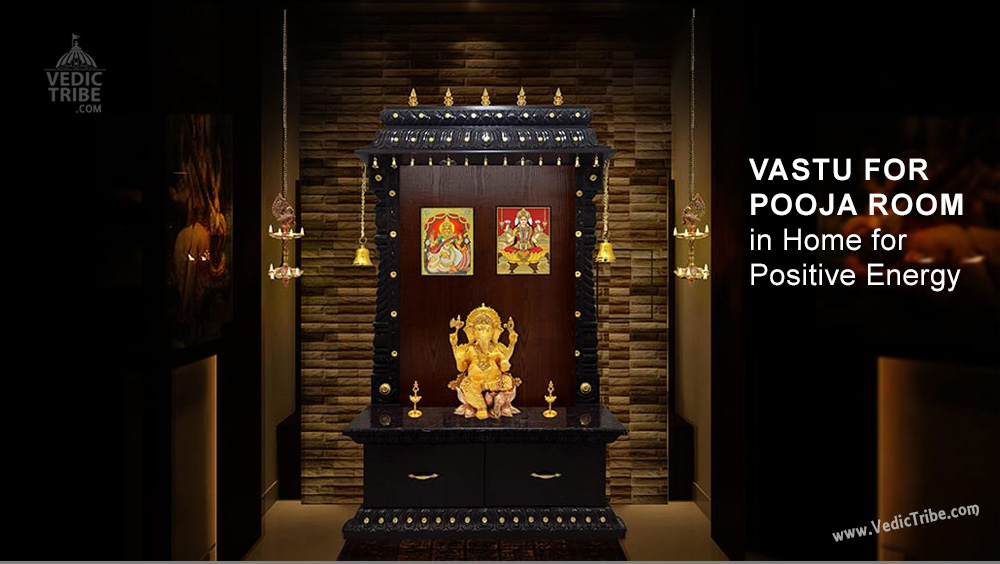
In the present times, Vastu Shastra is the most commonly used term, especially when it comes to purchasing or constructing a new home. To have a happy and prosperous household you must lay stress on enhancing the positive energy inside your home. Vastu Shastra increases wealth, well being and prosperity if you live in structures that allow positive cosmic forces.
One of the most important and sacred corner in any home is a zone of tranquility, the prayer or meditation area; usually known as ‘Pooja Ghar’. Although placement of a Puja Ghar itself brings positive energies in a home, but designing this sacred place as per Vastu guidance enhances positivity in the environment all around. According to Vastu Shastra, the North East zone or the Eeshan (Ishan) corner of a house is the best suited area for placing the Puja room.
It is believed that when Vastu Purush was brought down to the earth, his head laid in the north-east direction. So, while worshipping in this direction along with coming closer to the deity, we also pay obeisance to him. The direction also receives the purifying rays of the rising sun, which purifies the environment and brings positivity and prosperity into our homes.
Follow the below mentioned attributes in order to get an ideal Puja room:
- Never locate the Puja room in the south and the south-east, as these directions are ruled by Yama and Agni, respectively.
- Never locate the Puja space in the bedroom, as this place is for rest and pleasure. However if there is no choice, locate it in the north-east corner of the room. Take care that your feet do not point towards this corner while lying on the bed.
- Avoid locating the toilet above, below or opposite to this room to prevent the negative energies of the toilet from spoiling the auspicious atmosphere of the Puja room.
- This room should also not be constructed next to the kitchen or located under a staircase. In case you do make the Puja space in the kitchen, keep the deity in such a way that you face east while praying.
- In very big plots, factories or apartments, the prayer room can be located in the centre or the Brahmasthana, the sector governed by Lord Brahma, the Creator.
- Make the roof of the Puja room dome or pyramid-shaped. This facilitates smooth flow of positive energies from the tip to the dome or pyramid into the puja room. This shape also assists in meditation.
- Use tranquil colours on the walls of the Puja room like white, soft shades of yellow, blue or violet. These colours do not distract while praying.
- Ideally, the doors and windows of this room should open towards the east or north. These should be made of good quality wood and have double shutters.
- Although north-east is generally the direction recommended for locating the idols or pictures of various Gods; yet different deities have different auspicious locations as described:
- Brahma, Vishnu, Mahesh, Kartikeya, Indra and Surya are placed in the east and facing towards west.
- Ganesh, Durga, Kuber, Shodas Matrika and Bhairav in the north direction and facing south.
- Hanuman in the north-east facing south-west, but never in the south-east as it creates fire hazard.
- Never keep idols brought from ancient temples in the puja room. Also avoid Shrichakra and Shaligram idols, unless you have tremendous spiritual control and are capable of performing puja in a traditional manner.
- Never display photographs of the dead family members along with the deities.
- The height of idols should not be more than 18 inches and should always be placed on a high platform or singhasan.
- Keep the holy books or dharmic granths and other items of samagri and dresses of the deities along the west and south wall.
- The lamp or deepak should be placed in the south-east direction, governed by Agni.
- The Puja room should not be used for other purposes, like storing items that do not belong here. It should also not be used for sleeping purposes or to conceal money and other valuables.
- Never keep a dustbin in the Puja room, as the positive energy gets diminished due to the negative energies emitted by it.
- If you ensure the above mentioned points, you would not only add to the serenity of the room, but would also find yourself spiritually uplifted with increased powers of meditation.
- Dr. Prem Kumar Sharma, resident astrologer of Hindustan Times and Vastu consultant, has authored many books including ‘A Comprehensive Book on Vastu’ and ‘Cultivate Your Relationship the Vastu Way’.
~ By Astrologer Dr. Prem Kumar Sharma
Follow us on Facebook
Follow us on Twitter
Latest


Seven Vows and Steps (pheras) of Hindu Wedding explained
Views: 7,799 Indian marriages are well renowned around the world for all the rituals and events forming part of the...


Sari or Saree is symbol of Indian feminism and culture
Views: 6,582 One of the most sensual attires of a woman in India is undoubtedly the sari. It is a...


Atithi Devo Bhava meaning in Hinduism and India
Views: 5,951 Atithi Devo Bhava, an ancient line taken from the Hindu scriptures and was originally coined to depict a visiting person whose...


Sanskrit Is More Than Just A Method To Communicate
Views: 4,769 -By Ojaswita Krishnaa Chaturvedi anskrit is the language of ancient India, the earliest compilation of sound, syllables and...


Significance of Baisakhi / Vaisakhi
Views: 5,957 Baiskhi is also spelled ‘Vaisakhi’, and is a vibrant Festival considered to be an extremely important festival in...


Navaratri: The Nine Divine Nights of Maa Durga!
Views: 6,978 – Shri Gyan Rajhans Navratri or the nine holy days are auspicious days of the lunar calendar according...


History of Vastu Shastra
Views: 9,649 Vastu Shastra (or short just Vastu) is the Indian science of space and architecture and how we may...


Significance of Bilva Leaf – Why is it dear to Lord shiva?
Views: 9,343 – Arun Gopinath Hindus believe that the knowledge of medicinal plants is older than history itself, that it...


Concept of Time and Creation (‘Brahma Srishti’) in Padma Purana
Views: 9,635 Pulastya Maha Muni affirmed to Bhishma that Brahma was Narayana Himself and that in reality he was Eternal....


Karma Yoga – Yog Through Selfless Actions
Views: 8,857 Karma Yoga is Meditation in Action: “Karma” means action and “yoga” means loving unity of our mind with...

